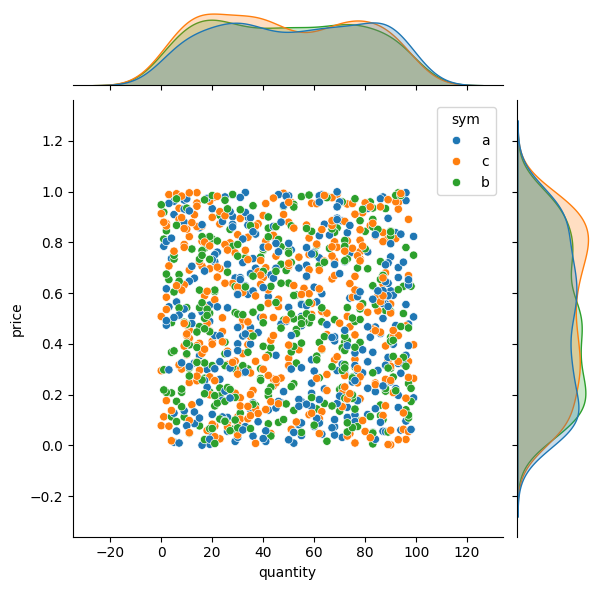Chart data with PyKX
This workbook details example of interfacing PyKX with Python charting libraries.
PyKX supports rich datatype mapping meaning you can convert data from PyKX objects to:
-
Python objects using
.py() -
NumPy objects using
.np() -
Pandas objects using
.pd() -
PyArrow objects using
.pa()
The full breakdown of how these map is documented here.
The resulting objects behave as expected with all Python libraries.
For efficiency and exactness the examples below aim to use PyKX objects directly, minimising conversions when possible.
Python
import os
os.environ['PYKX_IGNORE_QHOME'] = '1' # Ignore symlinking PyKX q libraries to QHOME
os.environ['PYKX_Q_LOADED_MARKER'] = '' # Only used here for running Notebook under mkdocs-jupyter during document generation.Python
import pykx as kx
tab = kx.Table(data={
'sym':kx.random.random(1000, ['a', 'b', 'c']),
'price':kx.random.random(1000, 1.0),
'size':kx.random.random(1000, 10),
'quantity':kx.random.random(1000,100),
'in_stock':kx.random.random(1000, [True, False])})
tab.head()|
sym |
price |
size |
quantity |
in_stock |
|
|---|---|---|---|---|---|
| 0 | a | 0.9094126 | 4 | 5 | 1b |
| 1 | a | 0.2988477 | 5 | 18 | 1b |
| 2 | c | 0.454063 | 8 | 11 | 0b |
| 3 | b | 0.156942 | 1 | 36 | 1b |
| 4 | c | 0.04699265 | 4 | 43 | 1b |
Matplotlib
Let's generate a scatter plot using the price and size columns of our table.
Use the scatter(tab['price'], tab['quantity']) notation to access PyKX objects directly.
The x= and y= syntax requires conversion to a dataframe using .pd() .i.e scatter(tab.pd(), x='price' ,y='quantity')
scatter uses a series of 1D arrays and one of the only charts where you don't need to start by converting the column values in NumPy objects using .np().
Python
import matplotlib.pyplot as plt
plt.scatter(tab['price'], tab['quantity'])
plt.show()
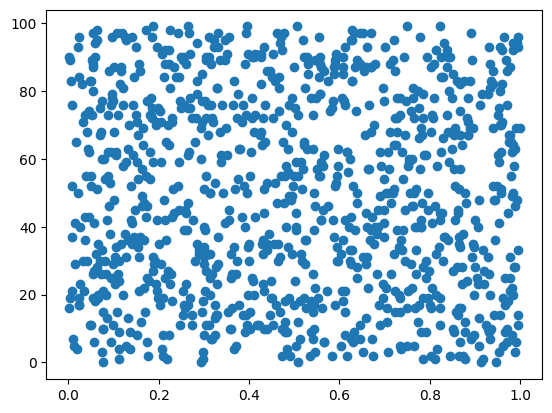
To make the column values compatible with most Matplotlib charts, first convert them to NumPy objects using the .np() function.
Python
plt.bar(tab['size'].np(), tab['price'].np())
plt.show()
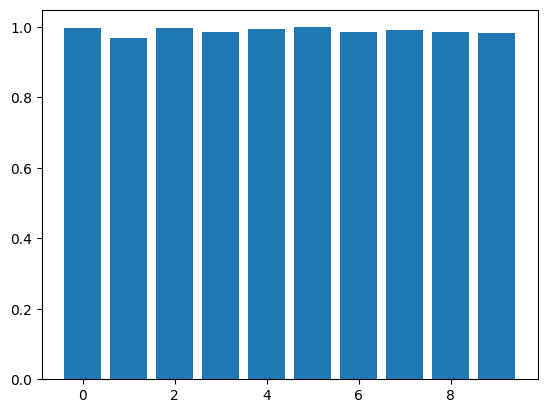
Plotly
Plotly allows you to pass vector objects as the color argument. Set this parameter using the sym column to obtain the scatter chart below.
Python
import plotly.express as px
fig = px.scatter(
x=tab['quantity'],
y=tab['price'],
size=tab['size'],
color=tab['sym'])
fig.show(renderer="png")
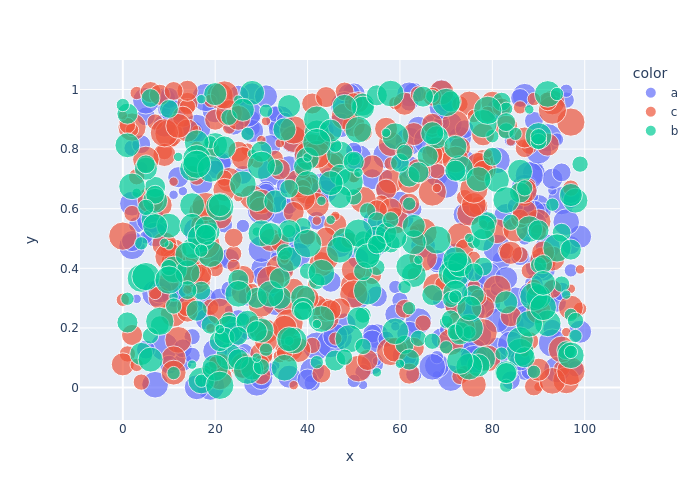
Unlike with Pandas, a PyKX table cannot be passed as the first argument with the following data being passed as column names. Each axis must be explicitly set.
To use this feature, first convert to Pandas using the .pd() function.
To create a density heatmap using Plotly, convert the table to a Pandas Dataframe. The axes are simply assigned the column names as strings.
Python
fig = px.density_heatmap(
tab.pd(),
x='price',
y='size')
fig.show(renderer="png")
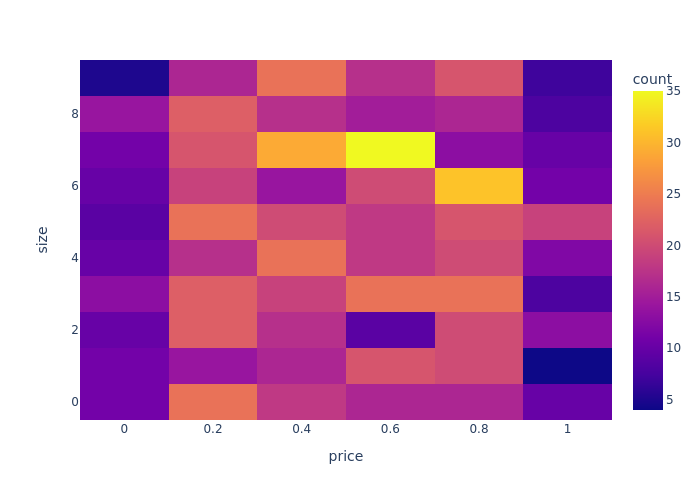
Seaborn
Seaborn allows you to set data as a PyKX table name without conversions and then call the x and y parameters using only the column names of that table.
The bar chart below demonstrates this by setting the data as the table object and using the column names for all parameters, without any conversions.
Python
import seaborn as sns
import matplotlib.pyplot as plt
sns.catplot(
kind='bar',
data=tab,
x='size',
y='quantity',
hue='sym'
)
plt.show()
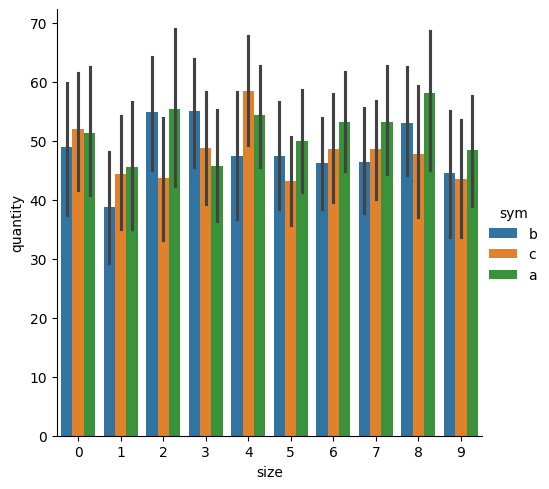
Seaborn supports joining plots together, allowing you access to another layer of visualisation.
Python
sns.jointplot(data=tab, x="quantity", y="price", hue="sym")
plt.show()
